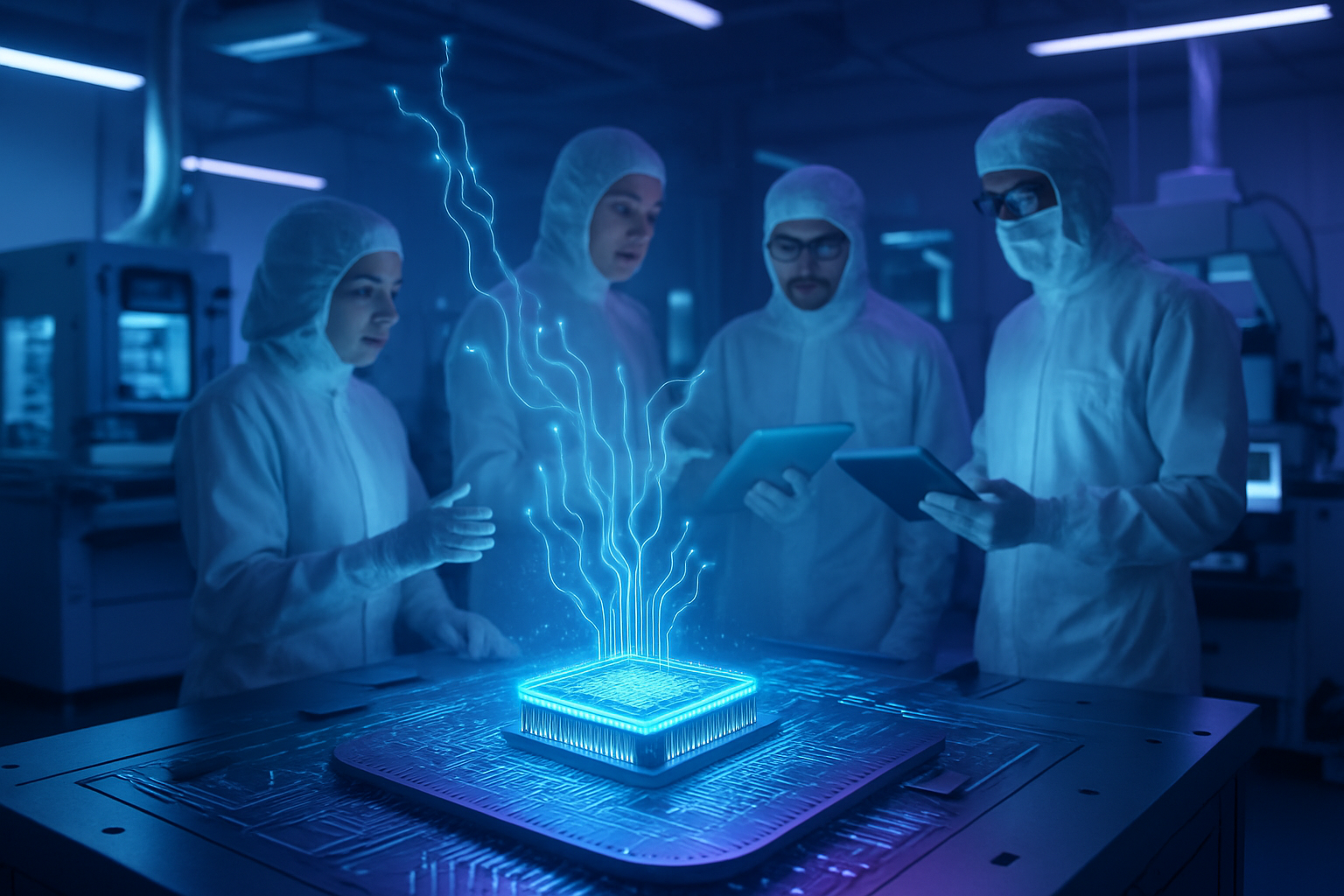Seoul, South Korea – November 19, 2025 – In a move set to significantly bolster South Korea's critical semiconductor ecosystem, Park Kyung-soo, Chairman of PSK, a leading global semiconductor equipment manufacturer, along with PSK Holdings, announced a substantial donation of 2 billion Korean won (approximately US$1.45 million) in development funds. This timely investment, directed equally to Korea University and Hanyang University, underscores the escalating global recognition of semiconductor talent development as the bedrock for sustained innovation in artificial intelligence (AI) and the broader technology sector.
The donation comes as nations worldwide grapple with a severe and growing shortage of skilled professionals in semiconductor design, manufacturing, and related fields. Chairman Park's initiative directly addresses this challenge by fostering expertise in the crucial materials, parts, and equipment (MPE) sectors, an area where South Korea, despite its dominance in memory chips, seeks to enhance its competitive edge against global leaders. The immediate significance of this private sector commitment is profound, demonstrating a shared vision between industry and academia to cultivate the human capital essential for national competitiveness and to strengthen the resilience of the nation's high-tech industries.
The Indispensable Link: Semiconductor Talent Fuels AI's Relentless Advance
The symbiotic relationship between semiconductors and AI is undeniable; AI's relentless march forward is entirely predicated on the ever-increasing processing power, efficiency, and specialized architectures provided by advanced chips. Conversely, AI is increasingly being leveraged to optimize and accelerate semiconductor design and manufacturing, creating a virtuous cycle of innovation. However, this rapid advancement has exposed a critical vulnerability: a severe global talent shortage. Projections indicate a staggering need for approximately one million additional skilled workers globally by 2030, encompassing highly specialized engineers in chip design, manufacturing technicians, and AI chip architects. South Korea alone anticipates a deficit of around 54,000 semiconductor professionals by 2031.
Addressing this shortfall requires a workforce proficient in highly specialized domains such as Very Large Scale Integration (VLSI) design, embedded systems, AI chip architecture, machine learning, neural networks, and data analytics. Governments and private entities globally are responding with significant investments. The United States' CHIPS and Science Act, enacted in August 2022, has earmarked nearly US$53 billion for domestic semiconductor research and manufacturing, alongside a 25% tax credit, catalyzing new facilities and tens of thousands of jobs. Similarly, the European Chips Act, introduced in September 2023, aims to double Europe's global market share, supported by initiatives like the European Chips Skills Academy (ECSA) and 27 Chips Competence Centres with over EUR 170 million in co-financing. Asian nations, including Singapore, are also investing heavily, with over S$1 billion dedicated to semiconductor R&D to capitalize on the AI-driven economy.
South Korea, a powerhouse in the global semiconductor landscape with giants like Samsung Electronics (KRX: 005930) and SK hynix (KRX: 000660), has made semiconductor talent development a national policy priority. The Yoon Suk Yeol administration has unveiled ambitious plans to foster 150,000 talents in the semiconductor industry over a decade and a million digital talents by 2026. This includes a comprehensive support package worth 26 trillion won (approximately US$19 billion), set to increase to 33 trillion won ($23.2 billion), with 5 trillion won specifically allocated between 2025 and 2027 for semiconductor R&D talent development. Initiatives like the Ministry of Science and ICT's global training track for AI semiconductors and the National IT Industry Promotion Agency (NIPA) and Korea Association for ICT Promotion (KAIT)'s AI Semiconductor Technology Talent Contest further illustrate the nation's commitment. Chairman Park Kyung-soo's donation, specifically targeting Korea University and Hanyang University, plays a vital role in these broader efforts, focusing on cultivating expertise in the MPE sector to enhance national self-sufficiency and innovation within the supply chain.
Strategic Imperatives: How Talent Development Shapes the AI Competitive Landscape
The availability of a highly skilled semiconductor workforce is not merely a logistical concern; it is a profound strategic imperative that will dictate the future leadership in the AI era. Companies that successfully attract, develop, and retain top-tier talent in chip design and manufacturing will gain an insurmountable competitive advantage. For AI companies, tech giants, and startups alike, the ability to access cutting-edge chip architectures and design custom silicon is increasingly crucial for optimizing AI model performance, power efficiency, and cost-effectiveness.
Major players like Intel (NASDAQ: INTC), Micron (NASDAQ: MU), GlobalFoundries (NASDAQ: GFS), TSMC Arizona Corporation, Samsung, BAE Systems (LON: BA), and Microchip Technology (NASDAQ: MCHP) are already direct beneficiaries of government incentives like the CHIPS Act, which aim to secure domestic talent pipelines. In South Korea, local initiatives and private donations, such as Chairman Park's, directly support the talent needs of companies like Samsung Electronics and SK hynix, ensuring they remain at the forefront of memory and logic chip innovation. Without a robust talent pool, even the most innovative AI algorithms could be bottlenecked by the lack of suitable hardware, potentially disrupting the development of new AI-powered products and services and shifting market positioning.
The current talent crunch could lead to a significant competitive divergence. Companies with established academic partnerships, strong internal training programs, and the financial capacity to invest in talent development will pull ahead. Startups, while agile, may find themselves struggling to compete for highly specialized engineers, potentially stifling nascent innovations unless supported by broader ecosystem initiatives. Ultimately, the race for AI dominance is inextricably linked to the race for semiconductor talent, making every investment in education and workforce development a critical strategic play.
Broader Implications: Securing National Futures in the AI Age
The importance of semiconductor talent development extends far beyond corporate balance sheets, touching upon national security, global economic stability, and the very fabric of the broader AI landscape. Semiconductors are the foundational technology of the 21st century, powering everything from smartphones and data centers to advanced weaponry and critical infrastructure. A nation's ability to design, manufacture, and innovate in this sector is now synonymous with its technological sovereignty and economic resilience.
Initiatives like the PSK Chairman's donation in South Korea are not isolated acts of philanthropy but integral components of a national strategy to secure a leading position in the global tech hierarchy. By fostering a strong domestic MPE sector, South Korea aims to reduce its reliance on foreign suppliers for critical components, enhancing its supply chain security and overall industrial independence. This fits into a broader global trend where countries are increasingly viewing semiconductor self-sufficiency as a matter of national security, especially in an era of geopolitical uncertainties and heightened competition.
The impacts of a talent shortage are far-reaching: slowed AI innovation, increased costs, vulnerabilities in supply chains, and potential shifts in global power dynamics. Comparisons to previous AI milestones, such as the development of large language models or breakthroughs in computer vision, highlight that while algorithmic innovation is crucial, its real-world impact is ultimately constrained by the underlying hardware capabilities. Without a continuous influx of skilled professionals, the next wave of AI breakthroughs could be delayed or even entirely missed, underscoring the critical, foundational role of semiconductor talent.
The Horizon: Sustained Investment and Evolving Talent Needs
Looking ahead, the demand for semiconductor talent is only expected to intensify as AI applications become more sophisticated and pervasive. Near-term developments will likely see a continued surge in government and private sector investments in education, research, and workforce development programs. Expect to see more public-private partnerships, expanded university curricula, and innovative training initiatives aimed at rapidly upskilling and reskilling individuals for the semiconductor industry. The effectiveness of current programs, such as those under the CHIPS Act and the European Chips Act, will be closely monitored, with adjustments made to optimize talent pipelines.
In the long term, while AI tools are beginning to augment human capabilities in chip design and manufacturing, experts predict that the human intellect, creativity, and specialized skills required to oversee, innovate, and troubleshoot these complex processes will remain irreplaceable. Future applications and use cases on the horizon will demand even more specialized expertise in areas like quantum computing integration, neuromorphic computing, and advanced packaging technologies. Challenges that need to be addressed include attracting diverse talent pools, retaining skilled professionals in a highly competitive market, and adapting educational frameworks to keep pace with the industry's rapid technological evolution.
Experts predict an intensified global competition for talent, with nations and companies vying for the brightest minds. The success of initiatives like Chairman Park Kyung-soo's donation will be measured not only by the number of graduates but by their ability to drive tangible innovation and contribute to a more robust, resilient, and globally competitive semiconductor ecosystem. What to watch for in the coming weeks and months includes further announcements of private sector investments, the expansion of international collaborative programs for talent exchange, and the emergence of new educational models designed to accelerate the development of critical skills.
A Critical Juncture for AI's Future
The significant donation by PSK Chairman Park Kyung-soo to Korea University and Hanyang University arrives at a pivotal moment for the global technology landscape. It serves as a powerful reminder that while AI breakthroughs capture headlines, the underlying infrastructure – built and maintained by highly skilled human talent – is what truly drives progress. This investment, alongside comprehensive national strategies in South Korea and other leading nations, underscores a critical understanding: the future of AI is inextricably linked to the cultivation of a robust, innovative, and specialized semiconductor workforce.
This development marks a significant point in AI history, emphasizing that human capital is the ultimate strategic asset in the race for technological supremacy. The long-term impact of such initiatives will determine which nations and companies lead the next wave of AI innovation, shaping global economic power and technological capabilities for decades to come. As the world watches, the effectiveness of these talent development strategies will be a key indicator of future success in the AI era.
This content is intended for informational purposes only and represents analysis of current AI developments.
TokenRing AI delivers enterprise-grade solutions for multi-agent AI workflow orchestration, AI-powered development tools, and seamless remote collaboration platforms.
For more information, visit https://www.tokenring.ai/.



